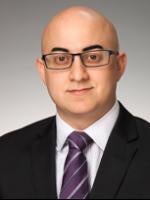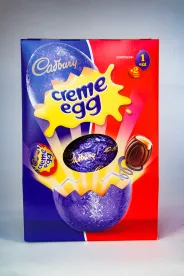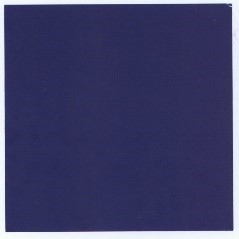Cadbury has proven the adage that that perseverance is the key to success as their continued and well-document pursuit over the registration of the colour purple has finally seen success in Société des Produits Nestlé S.A. v Cadbury UK Limited [2022] EWHC 1671 (Ch). The UK High Court has partially upheld the Cadbury appeal over UKIPO’s previous 2019 decision. Hopefully, this will bring clarity to businesses wishing to register colour marks instead of creating further ambiguity around the registrability requirements of colour marks and other non-traditional marks.
Background
Cadbury have continued in their pursuit over the colour purple by applying for the three UK trade marks below in class 30 for, broadly, milk chocolate and drinking chocolate. The colour marks all used the same Pantone number (2685C) with a block image, but all included a different description.
301362 (“Mark 362”)
The colour purple (Pantone 2685C), as shown on the form of application, applied to the whole visible surface of the packaging of the goods.
3019361 (“Mark 361”)
The colour purple (Pantone 2685C), as shown on the form of application, applied to the packaging of goods.
3025822 (“Mark 822”)
The colour purple (Pantone 2685C), shown on the form of application.
Initially, Nestlé opposed these registrations, alleging that they could not constitute a ‘sign’ according to the Trade Marks Act 1994, s.3(1)(a). While the UKIPO rejected the opposition for Mark 362, the UKIPO upheld the oppositions in respect to Mark 361 and 822. Cadbury appealed this decision to the High Court and, while they and Nestlé settled their dispute in the interim, the Comptroller-General pushed forward with the hearing in light of the uncertainty surrounding colour marks. It had already been decided in Libertel Groep BV v Beneleux-Merkenbureau that a colour is capable of being registered as a trade mark, but it continued to be uncertain how a colour could meet its criteria.
Mark 361
Mark 361 was a modification of a previously rejected registration by Cadbury, in which the mark was described as:
“the colour purple … applied to the whole visible surface, or being the predominant colour applied to the whole visible surface, of the packaging of goods”.
The use of the word ‘predominant’ in this case was seen as too broad, and capable of granting a right to multiple signs, with different forms and appearances.
However, the Hearing Officer at first instance did not see the removal of the word ‘predominant’ as limiting the scope – and in fact the Court went further to say that its removal made the formulation worse than previously rejected. The Court considered that it ‘preserves all practical problems of scope and adds more’. In the Court’s view, the problem with Mark 361 was that it leaves it significantly and unnecessarily unclear as to whether combination marks including purple and other colours would be within the scope of the mark.
Mark 822
The Hearing Officer rejected Mark 822, a Libertel form mark, for being too broad and leading to a multiplicity of forms, because there is no description as to how the mark will be applied. In this case, the Court disagreed and upheld Cadbury’s appeal. As Mark 822 was a Libertel form mark, then it was a single thing conceptually and its use was not restricted. The lack of description did not make the mark ambiguous, as the mark was capable of being used on various forms without making it a different sign.
Perhaps most interesting, the Court found that, if a Libertel form mark is capable of registration ‘in the right circumstances’, then the Cadbury mark must be capable of registration due to its long-standing history and place in the public subconscious. If this is not enough to be registered, then the Court could not see any other situation where an applicant could do better. In deciding that a colour per se mark could only be valid if accompanied by a limitation of use, the Hearing Officer was acting inconsistently with the CJEU and making colour marks unobtainable.
Commentary
The decision highlights the need for a trade mark description to create a clear scope as to ensure legal certainty. While on the face of things, Mark 362 and March 361 are very similar, the specific inclusion of where the colour would be applied sufficiently limited the scope as to prevent a plurality of signs. This argument was also used to allow the registration of Mark 822, as it was conceptually just one single thing: the colour purple.
In practice, it will be important for applicants to ensure that any colour marks follow the principles of this decision and limit the registration to a Libertel form mark – any further description risks ambiguity leading to a mark with a multitude of forms. If an applicant must include a text description, it must be carefully crafted as to limit the scope of the mark to a single form.
Regardless, the successful appeal for Mark 822 has brought much needed clarity about what colour trade marks are capable of being registered in the UK.




 />i
/>i




